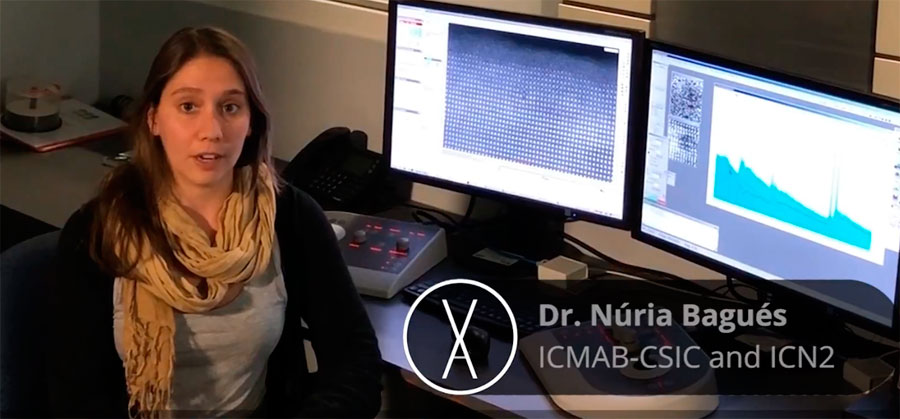Check the Advanced Functional Materials Video Abstract explaining a recent collaboration between ICN2 and ICMAB published under the title "The misfit dislocation core phase in complex oxide heteroepitaxy". Dr. Núria Bagués and Dr. José Santiso are it first authors, while Dr. Felip Sandiumenge is the last author.

Oxide electronics, photovoltaics and catalysis are just some of the practical applications of functional oxides. Understanding and predicting the defect structure and formation in complex oxides allows us to precisely design oxide-based nanodevices for unique functional applications.
In a recent publication in Advanced Functional Materials different atomic resolution imaging and spectroscopic techniques are combined to determine the complex structure of misfit dislocations in the perovskite type La0.67Sr0.33MnO3/LaAlO3 heteroepitaxial system. The first authors of the work are Dr. Núria Bagués and Dr. José Santiso, from the ICN2 Nanomaterials Growth Unit, while Dr. Felip Sandiumenge from ICMAB is its last author.
Learn about it in the following Video Abstract:
They report that oxygen vacancies selectively accumulate at the tensile region of the dislocation strain field. Such accumulation of vacancies is accompanied by the reduction of manganese cations in the same area, resulting in a localized net positive charge. The results highlight a prototypical core model for perovskite-based heteroepitaxial systems and offer insights for predictive manipulation of misfit dislocation properties.
Article reference:
Núria Bagués, José Santiso, Bryan D. Esser, Robert E. A. Williams, Dave W. McComb, Zorica Konstantinovic, Lluís Balcells, and Felip Sandiumenge. The misfit dislocation core phase in complex oxide heteroepitaxy. Advanced Functional Materials , 2018.
http://onlinelibrary.wiley.com/doi/10.1002/adfm.201704437/abstract
Information via: ICMAB

